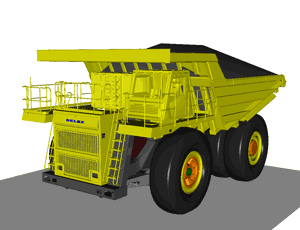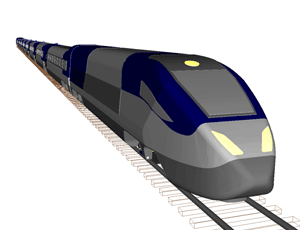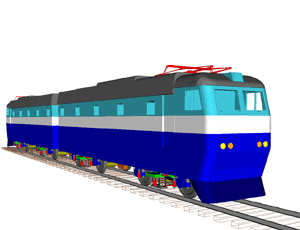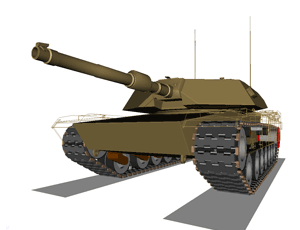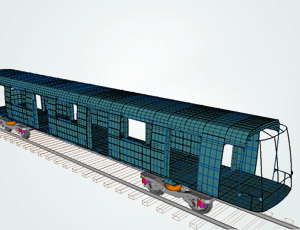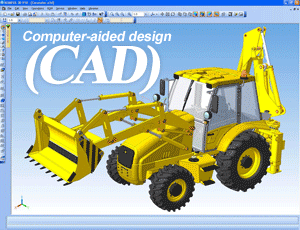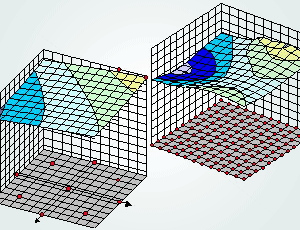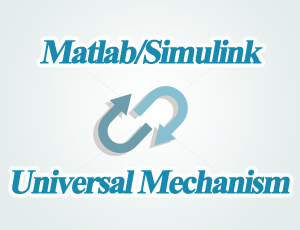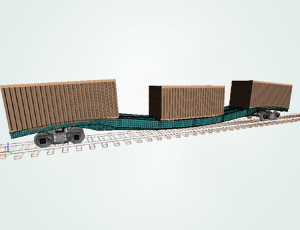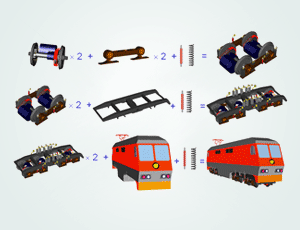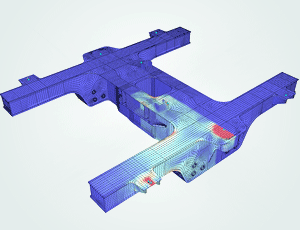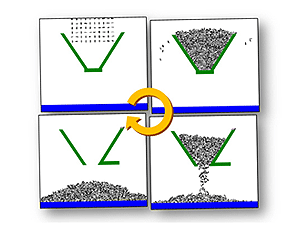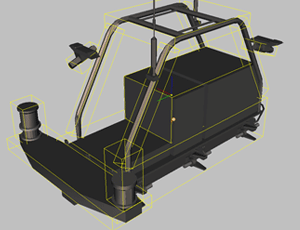News Categories / Publications
Dmitrotchenko O.N. Efficient Simulation of Rigid-Flexible Multibody Dynamics: Some Implementations and Results. In Werner Schiehlen and Michael Valasek (eds.)
Preprints of the NATO Advanced Study Institute on Virtual Nonlinear Multibody Systems, Czech Technical University in Prague, Prague, 2002, pp. 51-56
Known and modified simulation methods, such as composite and articulated ones, as well as different finite-element discretization methods are presented. Effectiveness of simulation of a large system can be estimated for a n-body chain. So, a direct method of implementation of the equations of motion is cubic in n. That is the computational effort is O(n3) for the mass matrix and O(n2) for the vector of generalized forces. The composite body method known for rigid multibody systems allows decreasing the effort to a quadratic one: down to O(n2) and O(n) for the matrices above. An application of the articulated body method for a rigid-flexible multibody system is considered. The method is linear in n for a n-body chain because it does not deal with a global mass matrix at all, but uses a recurrent two-step procedure instead in order to eliminate reaction forces from the equations of motion of separate bodies. Several examples of n-body pendulums (with various number of DOF per joint) were simulated using the Universal Mechanism (UM) software. The results show that the direct method is the fastest up to 10-15 rotational DOF in a chain, the composite method wins for 15 to 30 DOF, and further the articulated method is the best one. For flexible multibody systems, several approaches are discussed in the paper: finite rigid segment method, floating reference frame formulation as well as absolute nodal coordinate formulation. Several examples are shown in the presentation: cantilever beam subjected to large bending, motion of a flexible ellipsograph with a rigid pendulum, conveyor with hanging belt.
Publications
First International Conference on Rail Transportation, Chengdu, China, July 10-12, 2017
Read moreFirst International Conference on Rail Transportation, Chengdu, China, July 10-12, 2017
Read moreFirst International Conference on Rail Transportation, Chengdu, China, July 10-12, 2017
Read moreFirst International Conference on Rail Transportation, Chengdu, China, July 10-12, 2017
Read moreFirst International Conference on Rail Transportation, Chengdu, China, July 10-12, 2017
Read moreProgramme and Abstracts. EUROMECH 398, Colloquium on Fluid-Structure Interaction in Ocean Engineering, Technical University Hamburg-Harburg, Hamburg, Germany, October 11-14, 1999.
Read moreNumerical algorithms, pp. 183-194, 1998.
Read moreSeismological Research Letters, Volume 81, Number 5, September/October 2010, P. 804-810.
Read moreСборник трудов ДИИТа №14, Днепропетровск, ДИИТ, 2007. С. 123-127.
Read more

